



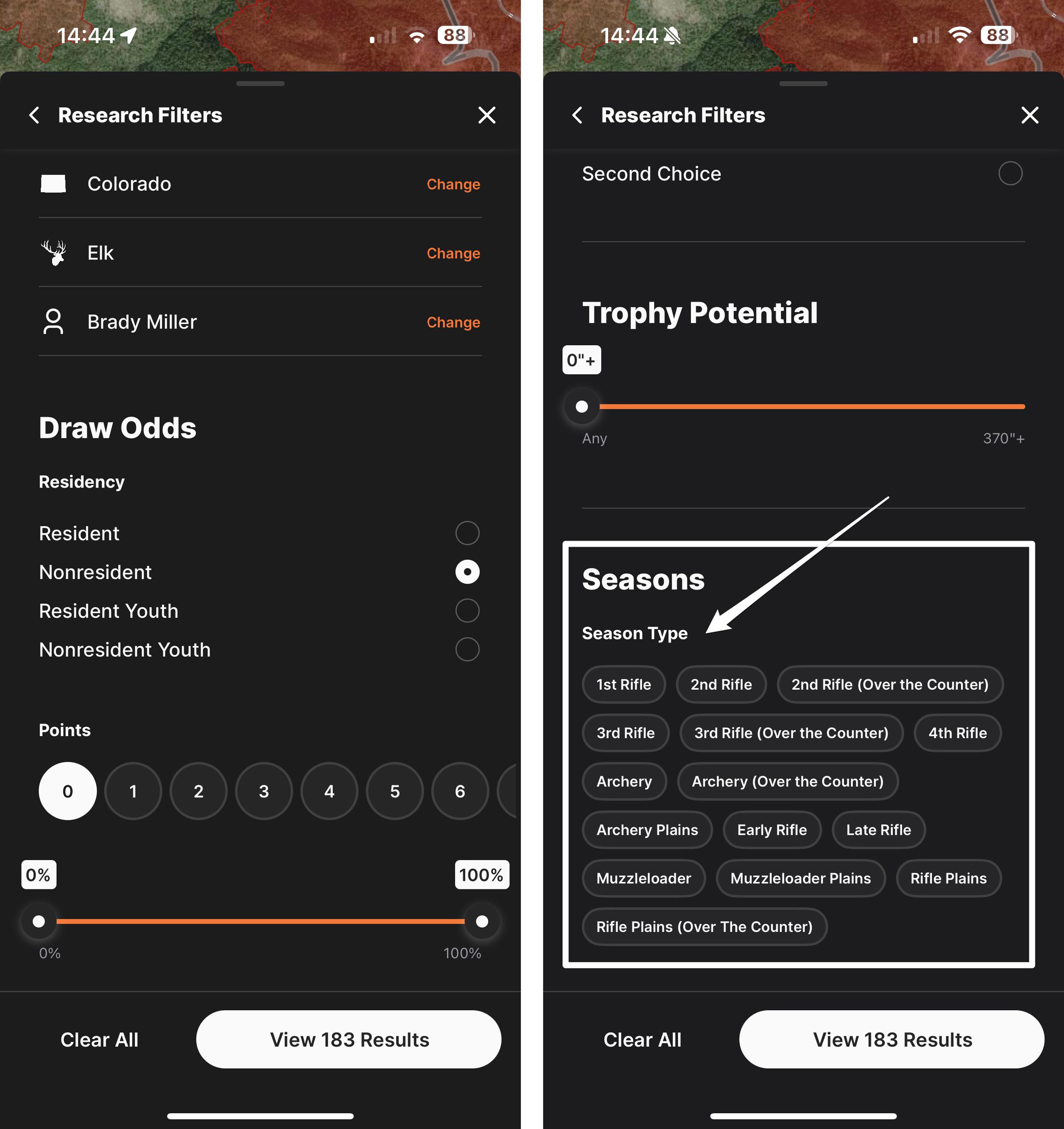
The season section filter is where you can select over the counter hunts.
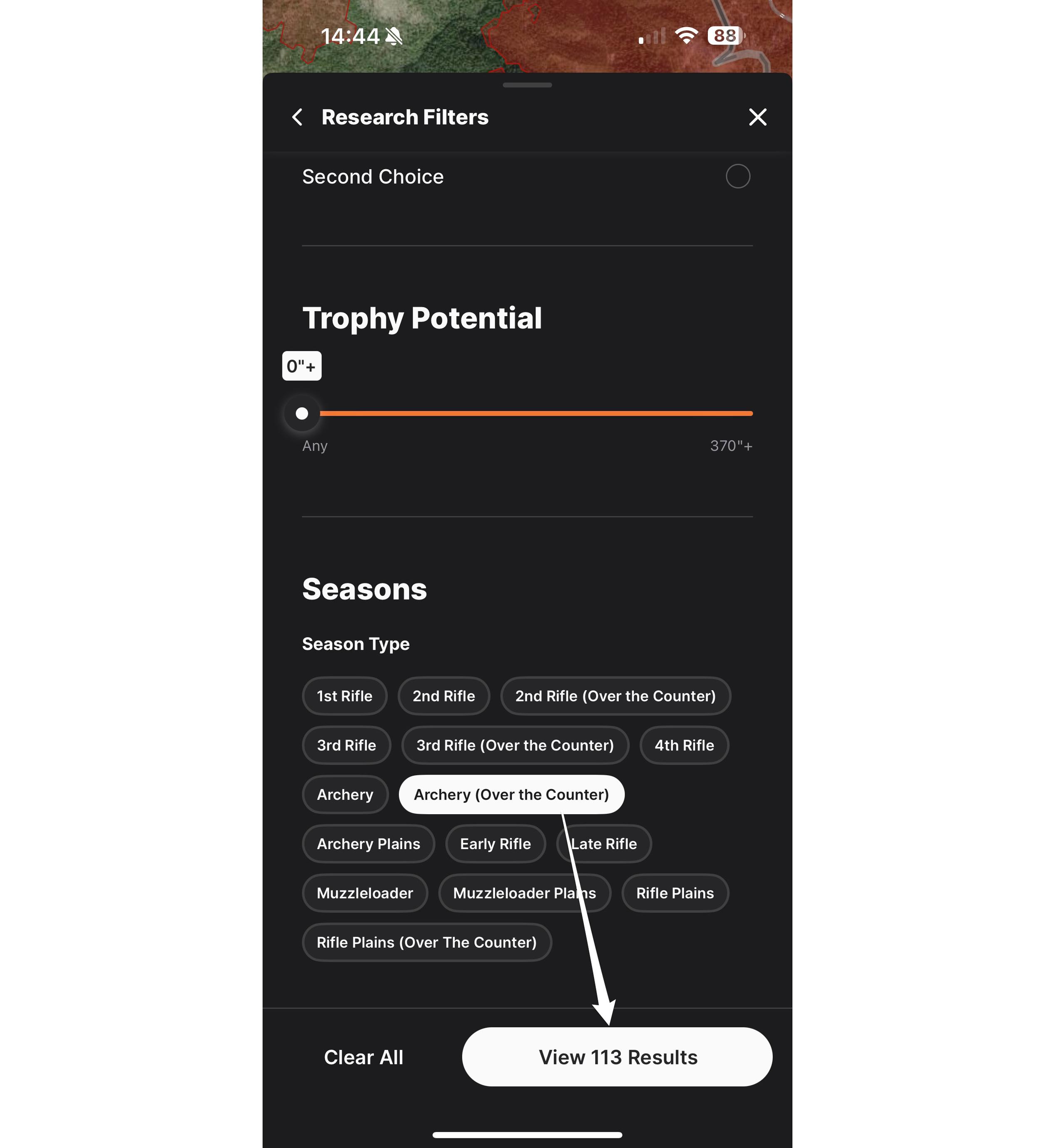
When "Archery (Over the Counter)" was selected, you'll notice the results narrowed from 183 units to 113.
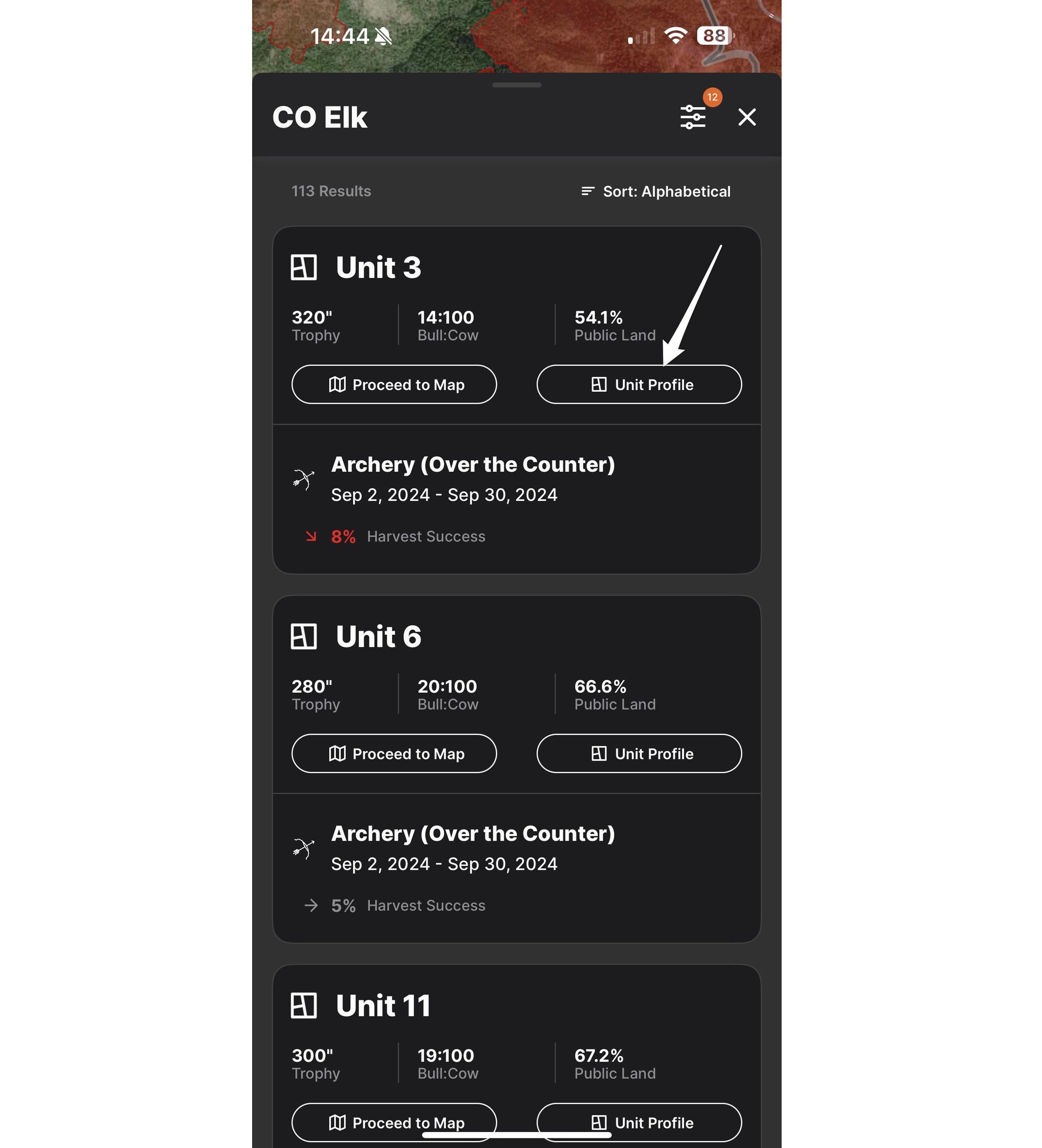
In the results section, you can scroll through the unit options, jump to a Unit Profile, view the unit on maps, or go back and modify your filter options.
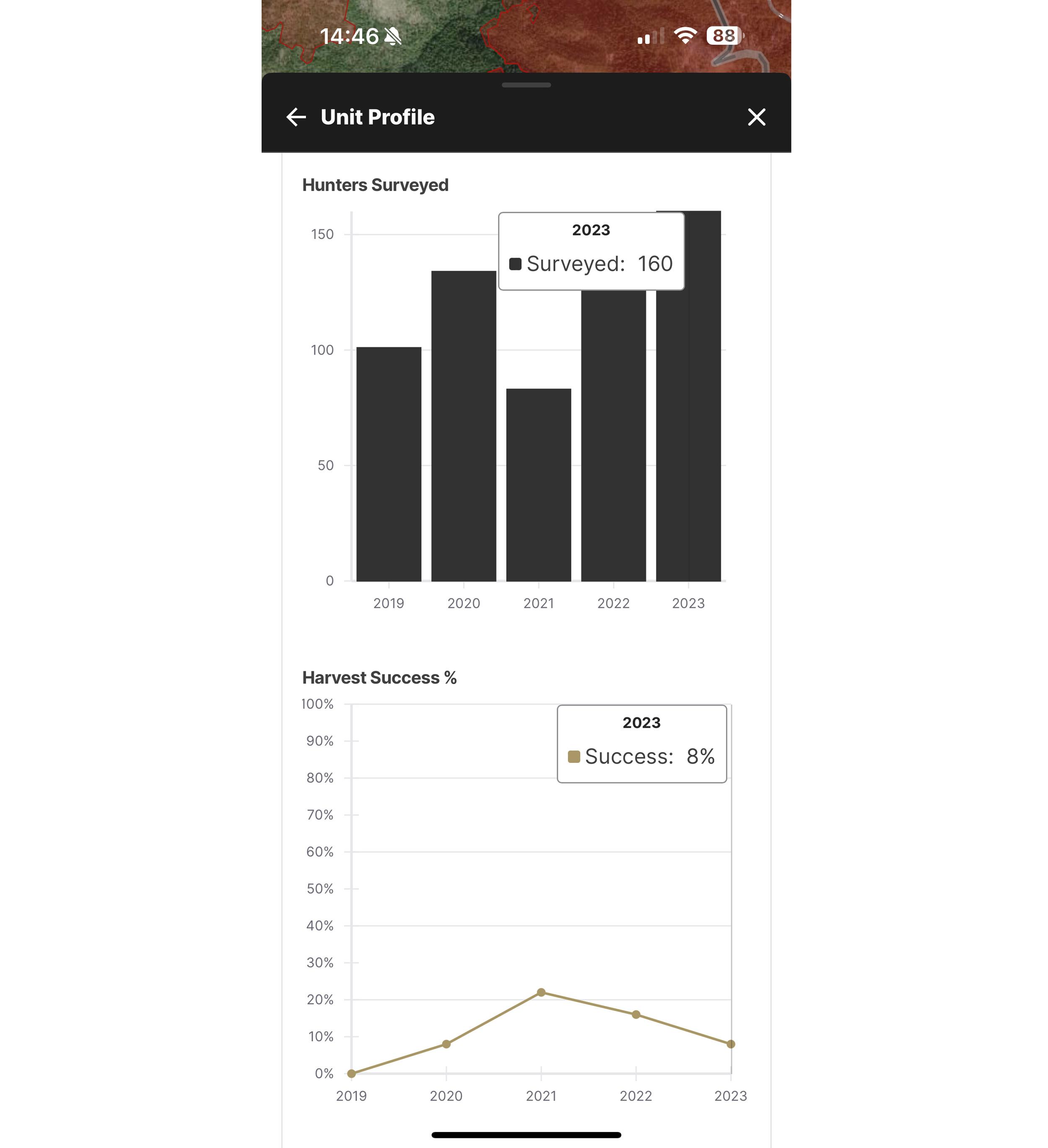
You can also tap on the graphics to see the value of harvest success and hunters surveyed by year.
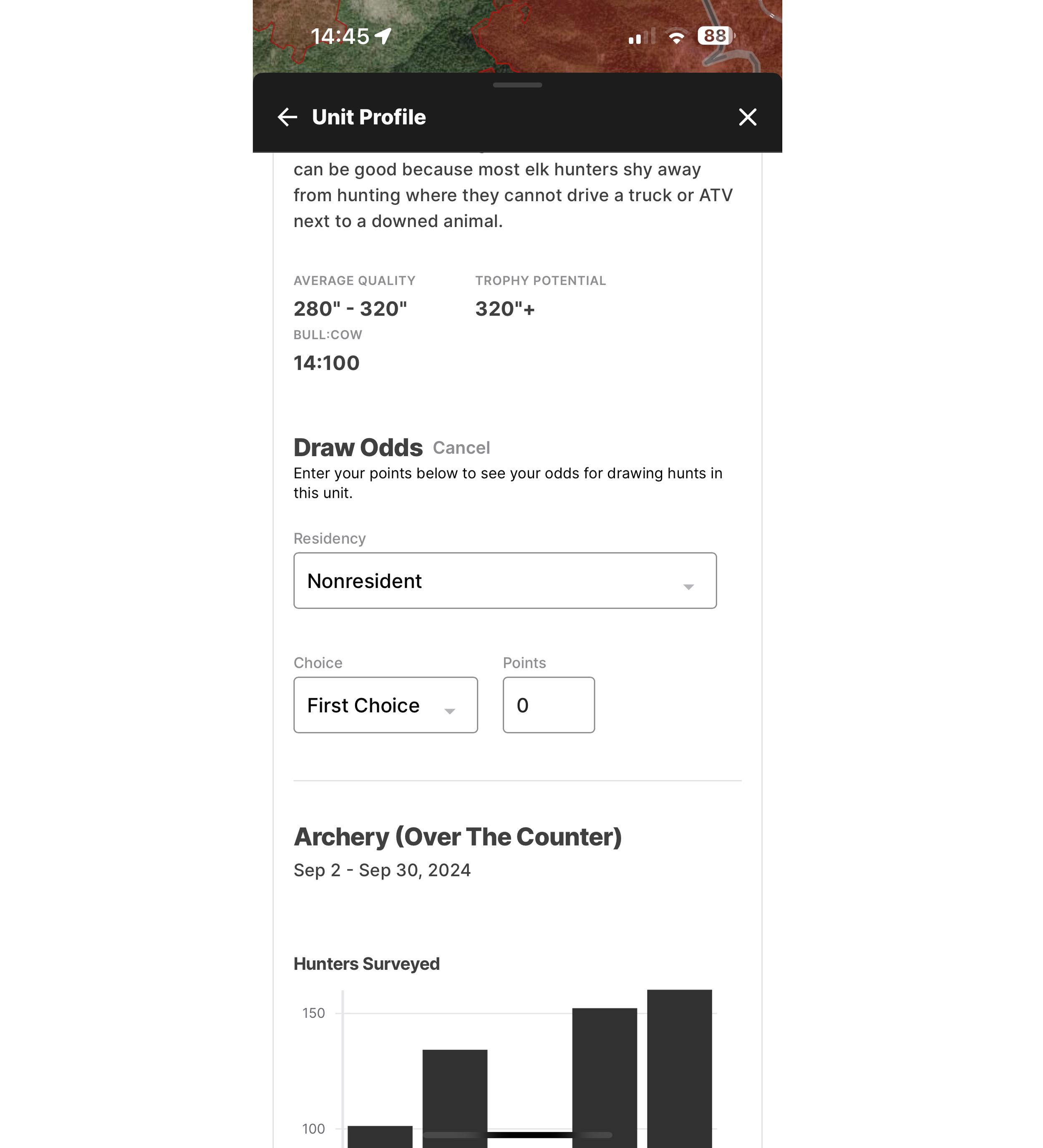
You can see trophy potential and male:female data in several locations on each Unit Profile.
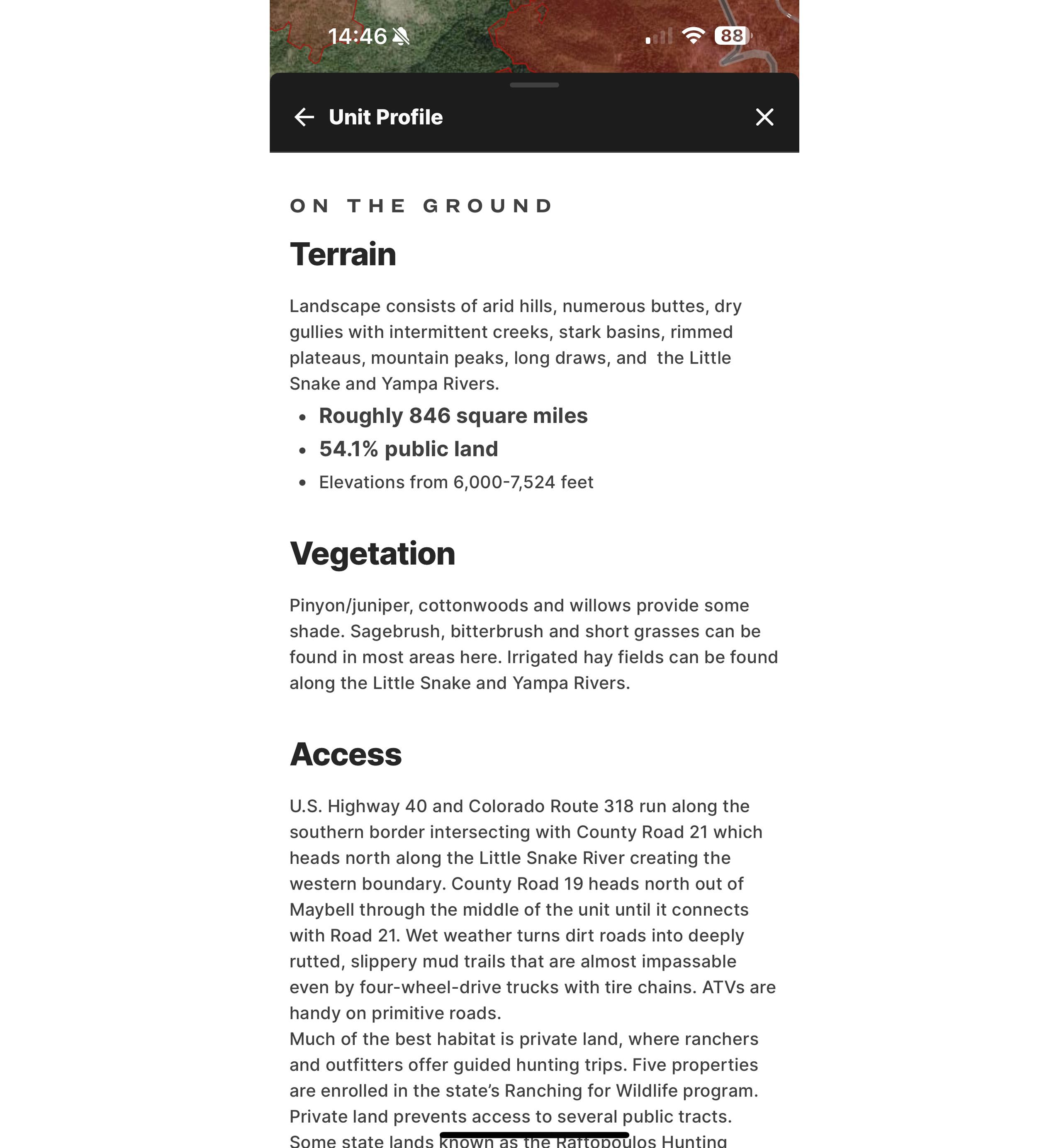
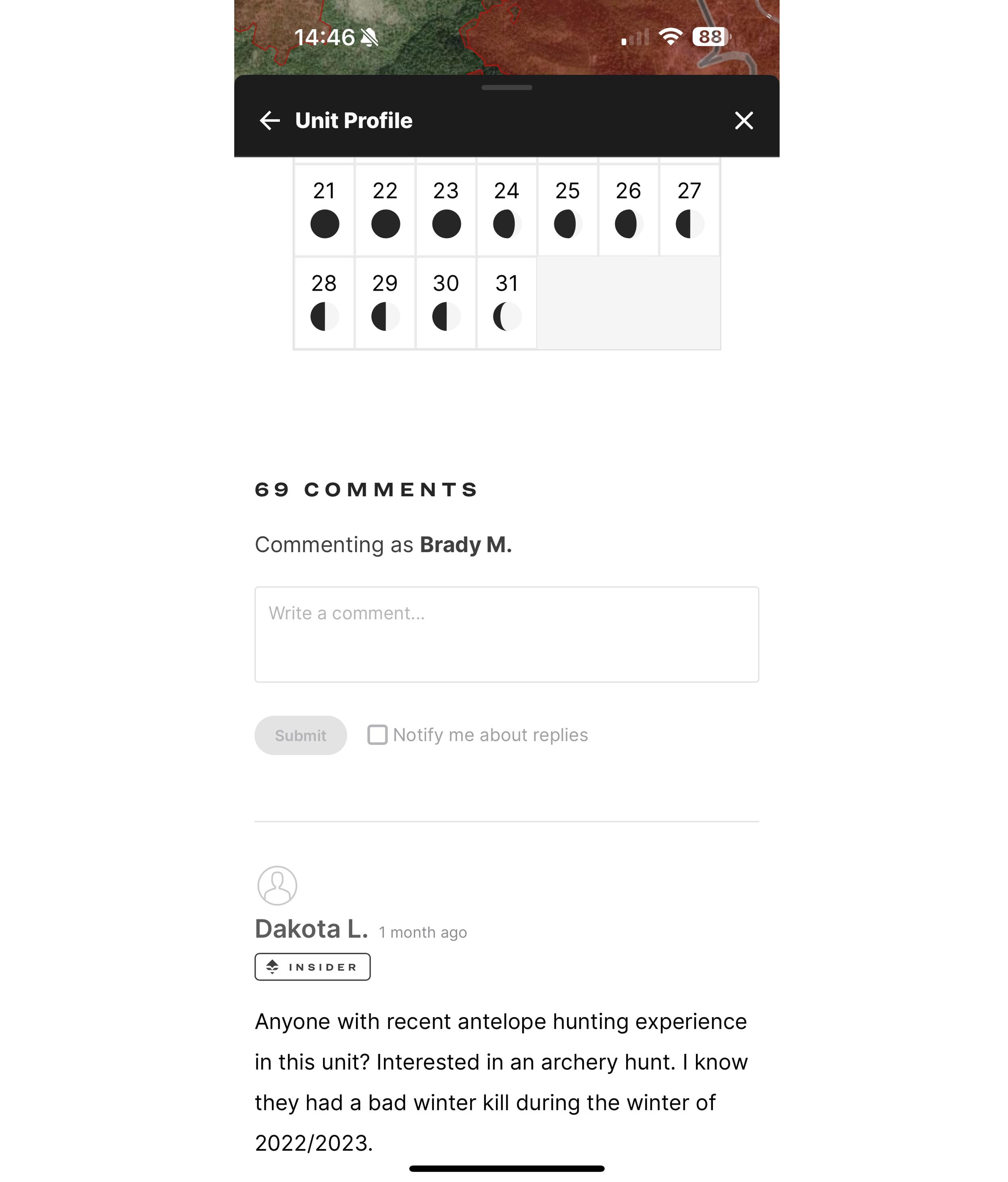
At the bottom of each Unit Profile, members can ask questions and communicate with other members about hunting in that unit.
We are quickly approaching September, which means it’s almost time for that unmistakable sound of bugling bull elk echoing through the mountains of the West.
There are still opportunities to hunt elk this fall even if you haven’t drawn a tag. Whether you are considering an over-the-counter (OTC) archery, second or third rifle season in Colorado, the Utah archery spike or any bull units, or even Oregon Roosevelt elk hunting on the coast, there are still chances to chase elk this fall.
One of the many questions I get is how do I pick a unit to hunt if I have an over-the-counter elk tag? The opportunities are vast. For example, if you buy an OTC elk tag in Colorado, you can hunt any of the open OTC units and finding the unit that works for you can seem like a high hurdle. GOHUNT recently added Unit Profiles for every unit/area in each state on our mobile app and that means you can now research each unit in the palm of your hand.
In this article, I’ll give you some ideas on how I use the Unit Profiles to research over-the-counter elk hunts.
First, I open the GOHUNT app on my phone. Then, I click on the “Research” icon in the bottom center of the screen/menu. Next, I would select “Filtering,” and then I select the state and species (elk) I am interested in researching.
After that, before I add any other filters, I’ll scroll down to the select season option and, if there are OTC hunts offered in the state you selected, they will be identified in this option.
From there, you can click on the over-the-counter season you are interested in researching. After that, you can use the other filters like “Harvest Success,” “Trophy Potential,” and/or “Public Land percentage” to further filter out the results.
Typically, since these are over-the-counter hunts, I rarely manipulate the Trophy Potential, but I will tinker with the Harvest Success filter to see which unit has higher success rates.
This is just one piece of the puzzle and taking it to the next step of looking at the Unit Profiles is where you can start to put together the bigger picture. That’s because the Unit Profiles provide additional information that’s incredibly helpful.
Once you click on a unit you’re researching, you can scroll down to see the “harvest success” and “hunters surveyed” graphs. These graphs offer five years of harvest data where if you’re only using the filter in the main portion of the app, you’ll only be fed the most recent year’s data. Five years of harvest data will provide you a much better picture of expected chances at success versus one year. The hunters surveyed graph will give you a good indication of how many other hunters hunted that unit over the past five years. This is a good indication of how much hunting pressure a unit may have on any given hunt. This can help you find units that have less hunting pressure than others. Now, there may be reasons that is the case, such as elk populations being lower, access being more difficult due to the area being more remote or private land issues, but the point is that hunting pressure is worth considering and you should cross reference that information with map work and also ensure that you read the rest of the Unit Profile. For units that offer OTC hunts as well as draw hunts, I like to look at the graphs for the draw hunts as well just to see how many tags were allocated and what the harvest success is for those hunts. This can give me an idea on how many elk might be in the unit and what times of year hunters typically have the most success. For example, if you are considering an OTC late rifle hunt and you have the option of a second or third rifle season, you should look to see the relationship between harvest success and hunters surveyed. If the harvest success is as good or better in a particular unit for the third season and there aren’t that many hunters surveyed, I would likely pick that hunt because there are fewer people in the field and my chances at success are as good or better.
Let’s not kid each other: almost everyone who goes hunting is hoping to take a mature bull — and the bigger, the better. The average quality listed in each Unit Profile will give you a good idea on what can be expected in any given unit. The other piece of that equation is the bull:cow ratio. This ratio includes any animal 18 months old or older and excludes calves. Across the western states, these are post hunting season/wintering population ratios, which are generated during post hunting season surveys conducted by game and fish departments or through population modeling based on harvest/age surveys from the previous season. At birth, the sex ratio is nearly 50:50 or at the most slightly skewed with more males than females. Yet, at adult stages, most of our western big game populations have a skewed male/female ratio. Part of that reason is because males are more vulnerable to predation and the breeding strategy of elk is more stressful on bulls. In addition, hunters primarily target bulls, which we can do without negatively impacting the population because one bull can and does breed many cows each fall. So what does a higher bull:cow ratio mean to a hunter? A higher bull:cow ratio indicates that there are more bulls in a population, which is good for hunters, and it also often means there’s a more stratified age class of bulls in the population. A more stratified age class means there are some more mature bigger antlered bulls, which, again, if you’re hoping to find a bigger bull is a good thing. This is why bull:cow ratios are worth looking at in each Unit Profile you’re considering.
The terrain and access in each Unit Profile are meant to give you an idea on what you can expect within any given unit in regards to what the areas of the unit are composed of and details about how you might access hunting areas. For example, if a unit has wilderness areas, those are identified there. If I am a backpack elk hunter that would be interesting for me to know. If a portion of the unit is blocked by private land, that information will be listed there, too.
Things I look for in these sections of the Unit Profiles when planning an elk hunt are:
Each Unit Profile also has an Insider comment section at the bottom of the page. Just scroll down and you’ll see the comments posted and their replies. This is one of the most valuable portions of the Unit Profile pages in my opinion and I always read through them prior to making a decision. Members often share hunt recaps, update others on access and have listed areas that you might consider hunting or even avoiding. Every hunter is different in their ability, so take the comments with a grain of salt; however, I’ve found some gems in the comments section of the Unit Profile pages. You can also post here asking for help or asking questions and leave your contact information and it’s common for others to reach out and share information. Don’t skip over the comments section — every piece of information you can gain is a piece of the puzzle.
Unit Profiles can be very helpful in picking the right unit for you, but you’ll need to know what type of hunt you’re after. Are you a backpack hunter? Are you a day hunter looking for good access? Is it more desirable to see fewer hunters, but, also, likely less game? Do you prefer hunting low country terrain or high country? Will any legal elk do or are you looking for the chance at a bigger bull? You’ll need to know the answers to these questions as well as a few others and the Unit Profiles have the information you need to help you drill down into the best fit for you. And now, it’s all available in the palm of your hand!
Percentage of public land
Number and location of wilderness areas
Vegetation descriptions, particularly if it varies across a unit
Any major roads and trails